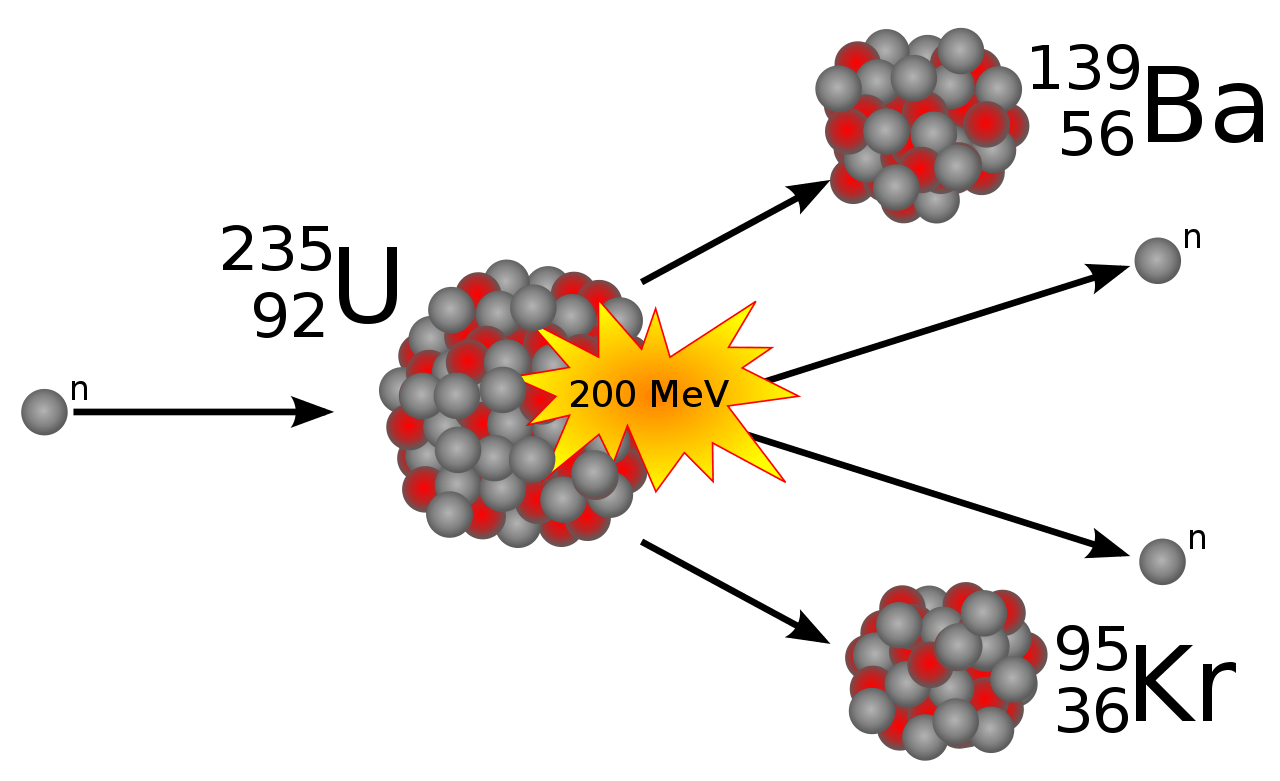

The nuclear chain reactions produce an enormous amount of energy which can be used to power communities when controlled but can also result in an explosion if left uncontrolled.Such fission reactions can result in a chain reaction where a large number of nuclei undergo fission in a sequence as a result of the emitted neutrons from the previous fission.Most nuclear fissions are binary fissions producing two equal halves however, some fissions result in three or more fragments.Nuclear fission is a type of nuclear transmutation as the resulting fragments from the fission are different from the original atom.The energy released from nuclear fission can occur in the form of electromagnetic radiation as well as kinetic energy.The resulting fragments after nuclear fission have a combined mass that is less than the original mass as some of the mass is converted into nuclear energy.Nuclear fission results in the release of a large amount of energy, radioactive products, and several neutrons.Nuclear fission might occur spontaneously or might be induced by the excitation of the nucleus.Nuclear fission is a type of nuclear reaction or a radioactive decay process where the nucleus of a heavy atom divides into two or more roughly equal nuclei. 12 Major Differences (Nuclear Fission vs Nuclear Fusion).


 0 kommentar(er)
0 kommentar(er)
